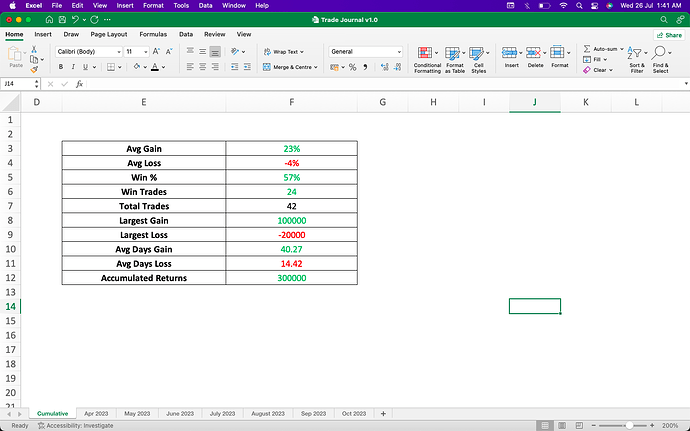I apologize for any confusion. Let me provide a more detailed explanation. To achieve profitability in the stock market over time, it is essential to leverage mathematics in your favor. In the excel sheet above, various sections are highlighted:
-
Average gain: This represents the average percentage gain of all your winning trades.
-
Average loss: This indicates the average percentage loss of all your losing trades.
-
Win trades: The number of profitable trades you have executed.
-
Largest gain: The highest percentage gain achieved in a single trade.
-
Largest loss: The largest percentage loss experienced in a single trade.
Consistent profits in the stock market can be attained by ensuring that your average gain, win trades, and largest gain are consistently improving, while your average loss and largest loss should be decreasing.
This analysis is akin to a report card, measuring your performance metrics. Before selling a position, regardless of whether it is a gain or loss, it is crucial to consider how it will impact your performance report. Will it enhance or diminish your overall performance?
However, mathematics is just one of the factors to consider. Analyzing charts for selling signals is also important. These signals may include the price declining on relatively higher volumes, downward trends in moving averages (e.g., 20, 50, 200), and stocks closing below important moving averages. Every trader may have their own set of metrics for selling decisions, but the key is to look for one or more indicators that provide sell signals.
By combining the use of these indicators with the insights from your Excel sheet, you can make more informed decisions when it comes to selling. This approach is commonly used in swing trading, but there’s no reason why it cannot be applied to long-term investing based on fundamentals as well.
| Subscribe To Our Free Newsletter |


